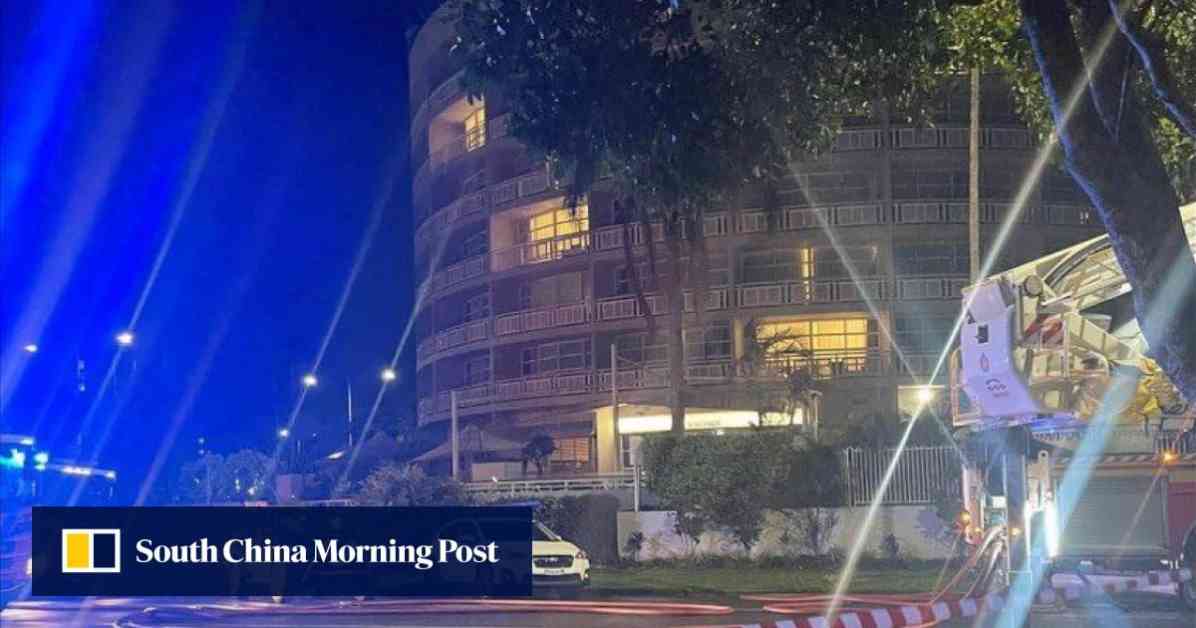A tragic incident occurred at a Hilton hotel in northeastern Australia when a helicopter crashed into the building’s roof, claiming the pilot’s life. The crash resulted in a fire on the hotel’s roof, causing panic and chaos among the patrons.
The emergency services official reported that mangled pieces of the helicopter’s propeller landed in the hotel’s pool, while two other bystanders were taken to the hospital in stable condition. The pilot, who was the sole occupant of the aircraft, was located and declared deceased at the scene. Forensic investigations are currently underway to formally identify the pilot.
Hundreds of patrons were evacuated from the DoubleTree by Hilton in Cairns following the crash, which occurred in the early hours of the morning. Images and videos shared on social media captured the intense fire that engulfed the hotel’s roof, leaving witnesses in shock and disbelief.
Queensland Ambulance supervisor Caitlin Denning described the chaotic scene, mentioning that the aircraft’s propellers had dislodged, with one landing on the Cairns Esplanade and another in the hotel pool, causing a fire. The loud noise and sight of smoke led to confusion and fear among the hotel occupants, with many uncertain about the situation.
Although the roof fire eventually subsided, the incident left a lasting impact on the local community and tourists visiting Cairns. The Australian Transport Safety Bureau has deployed a team of experts to investigate the crash site and gather information from witnesses. They have urged anyone with photos or videos of the aircraft during its flight or who heard the helicopter before the crash to come forward.
Cairns, known for its tourist attractions and access to the Great Barrier Reef, is now grappling with the aftermath of this tragic helicopter crash. The safety bureau’s investigation aims to determine the cause of the accident and prevent similar incidents in the future. As the community mourns the loss of the pilot, questions remain about what led to the fatal crash and how such disasters can be avoided in the future.



















